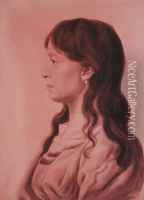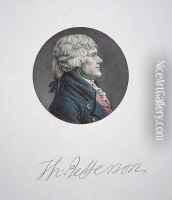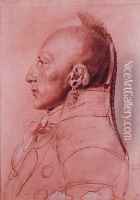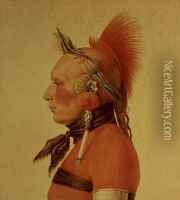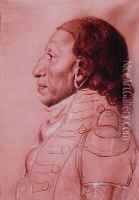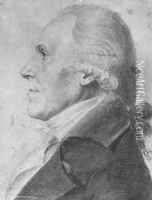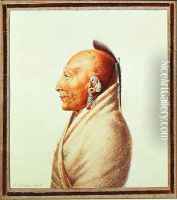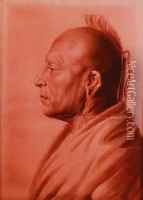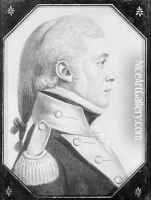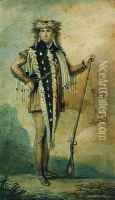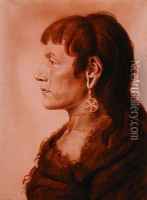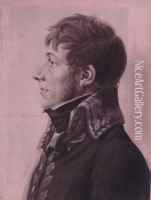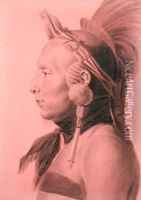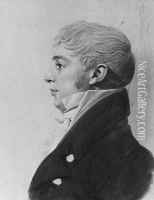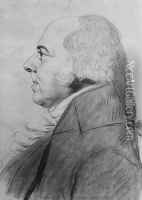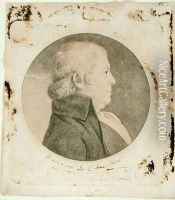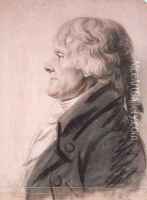Charles Balthazar J. F. Saint-Memin Paintings
Charles Balthazar Julien Févret de Saint-Mémin was a French portraitist and museum director who lived during the late 18th and early 19th centuries. He was born on March 12, 1770, in Dijon, France, into an aristocratic family. Saint-Mémin was initially trained as an engineer and served in the French military before the upheaval of the French Revolution forced him to flee to the United States in 1793.
In America, Saint-Mémin turned to the arts to support himself, becoming renowned for his portrait work. He utilized a physiognotrace, a device that helped to outline the profiles of his subjects, which he would then finish in drawings and engravings. His work is particularly noted for its detailed depiction of early American faces, providing a unique visual record of the era's prominent figures. Saint-Mémin's portraits are characterized by their accuracy and delicate shading, which he achieved through a meticulous engraving process.
During his time in the United States, Saint-Mémin created over 800 portraits, including those of Thomas Jefferson, Mother Seton, and Meriwether Lewis. His work provides an extensive portrayal of American society during the Federalist period and offers valuable insights into the nation's cultural and social history.
In 1814, after spending over two decades in the United States, Saint-Mémin returned to France. He later became the director of the museum in Dijon, his hometown, and continued his work in the arts until his death. Charles Balthazar Julien Févret de Saint-Mémin died on June 23, 1852, leaving behind a legacy as one of the most important portrait artists of his time, particularly in the context of early American history. His works are held in numerous collections and are studied for their artistic merit as well as their historical significance.
